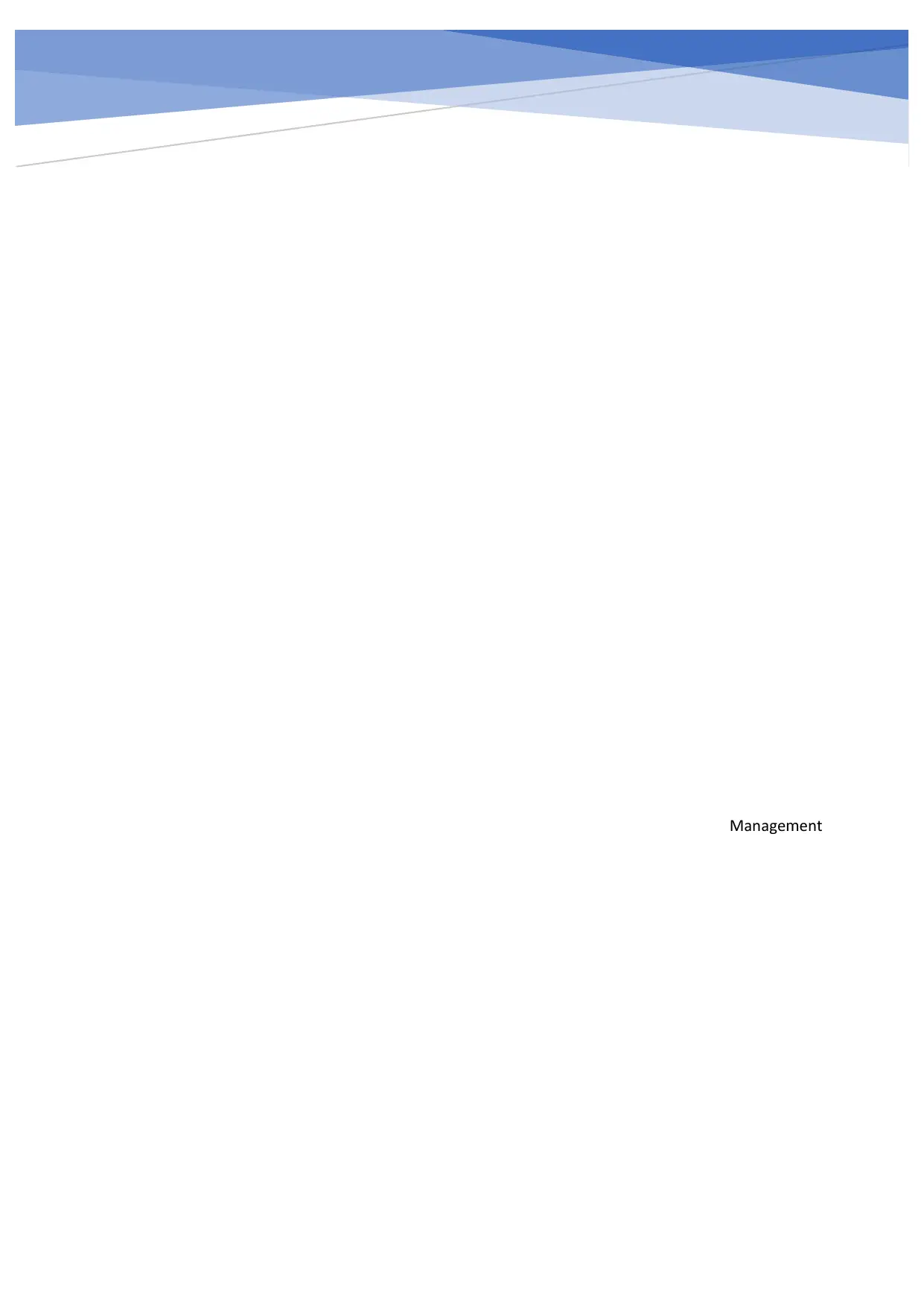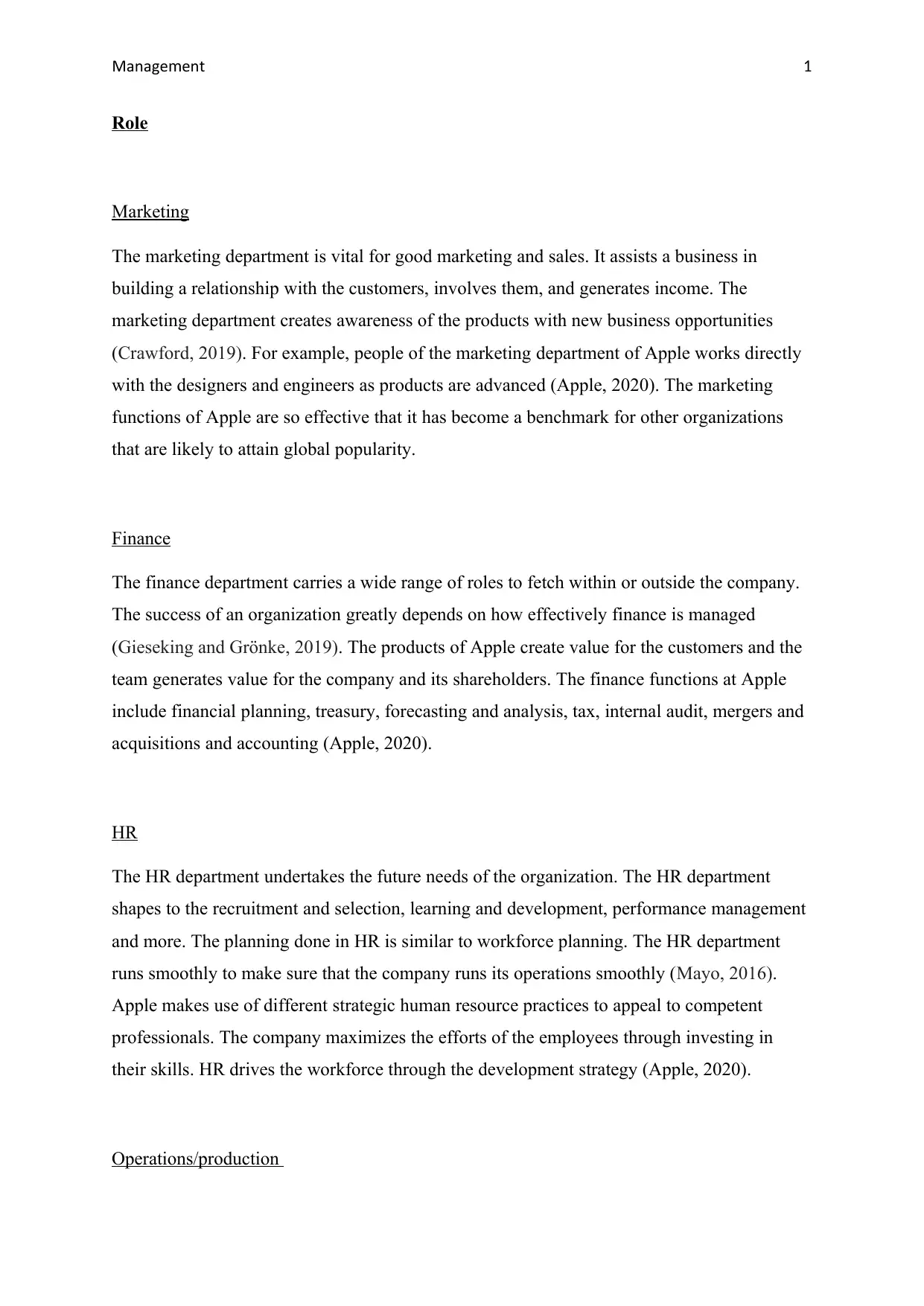Graduate Challenge: Business Functions and Collaboration Report
VerifiedAdded on 2022/08/13
|4
|789
|372
Report
AI Summary
This report examines the crucial roles of marketing, finance, human resources (HR), and operations/production within a business context, with a focus on the importance of their collaborative efforts. The report defines each function, referencing academic texts to explain their individual responsibilities and contributions to organizational success. The marketing department's role in customer relationship building and generating revenue is highlighted, using Apple as a case study. The finance department's functions in financial planning, forecasting, and analysis are discussed, emphasizing their impact on organizational value. The HR department's role in recruitment, development, and performance management is detailed, alongside its strategic importance in workforce planning. The operations department's responsibility for efficient and profitable production is also examined, using Apple's sophisticated operations as an example. The report emphasizes the benefits of inter-departmental collaboration, including self-analysis promotion, problem-solving, and a broader organizational perspective, with references to relevant academic texts and successful company examples like Apple. The report concludes by underscoring the significance of these functions working together to drive organizational success and competitiveness.
1 out of 4











![[object Object]](/_next/static/media/star-bottom.7253800d.svg)